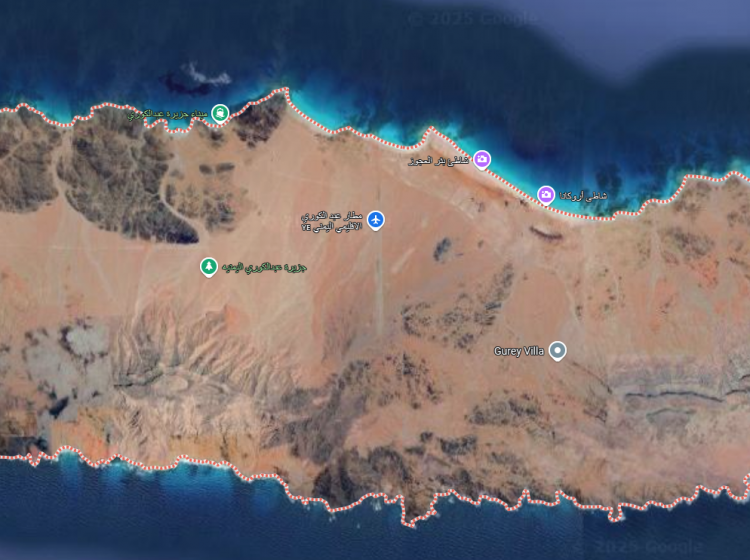A newly constructed airstrip on Yemen's Abd al-Kuri Island, located near the Gulf of Aden, has drawn significant international attention, with satellite images revealing its near completion. The airstrip's emergence on this remote and strategically vital island has intensified speculation about its purpose and the United Arab Emirates' (UAE) military and humanitarian roles in the region.
Satellite photos taken on January 7 by Planet Labs PBC depict trucks and heavy machinery on a 1.5-mile-long, 150-foot-wide north-south runway. Although still under construction, the airstrip's design indicates suitability for private jets and smaller military aircraft rather than large commercial planes or heavy bombers. Once operational, it could become a pivotal hub for operations in the Gulf of Aden, a waterway critical to global shipping and energy trade.
The UAE has been identified as the likely architect behind the project. The Gulf nation, a key ally in the Saudi-led coalition against Yemen's Iranian-backed Houthi rebels, has a history of establishing military infrastructure in the region. The UAE's activities on Abd al-Kuri and other locations, such as Mocha and Dhubab, reflect its broader strategic ambitions in Yemen and its surrounding waterways.
"This plan represents a serious violation of Yemeni sovereignty," stated the Houthi-controlled SABA news agency in November, accusing the UAE of pursuing espionage and colonial ambitions. While the UAE has dismissed such allegations, claiming its actions are based on "humanitarian grounds," tensions remain high. An Emirati government statement reiterated, "The UAE remains steadfast in its commitment to all international endeavors aimed at facilitating the resumption of the Yemeni political process, thereby advancing the security, stability, and prosperity sought by the Yemeni populace."
Abd al-Kuri is part of the Socotra Archipelago, a geographically strategic cluster of islands situated 95 kilometers from Africa and 400 kilometers from mainland Yemen. During the Cold War, the archipelago occasionally hosted Soviet warships. Today, the Southern Transitional Council (STC), backed and armed by the UAE, oversees the region. The STC's advocacy for a redivision of Yemen into north and south mirrors the geopolitical complexities of the area.
The airstrip's remote location and lack of direct access by Houthi ground forces provide a degree of security. However, the site remains within range of Houthi missiles and drones, raising concerns about its vulnerability amid ongoing regional conflict. The Houthis have continued drone and missile strikes, disrupting global shipping routes and drawing attention to their military capabilities.
The international response has been varied. The United Nations' International Civil Aviation Organization (ICAO), tasked with regulating global air traffic, has yet to receive information about the airstrip from Yemen, a member state. Yemen's exiled government and the Southern Transitional Council have not commented on the project, further fueling speculation about the UAE's role.
Critics argue that the UAE's presence on Socotra and surrounding islands could exacerbate regional instability. Conversely, supporters see the airstrip as a vital development for ensuring maritime security in a region plagued by Houthi disruptions.
Meanwhile, the airstrip's potential uses remain speculative. While the UAE has emphasized its humanitarian aid missions, the airstrip's military implications cannot be ignored. In addition to providing a logistical base for UAE operations, the facility could bolster efforts to secure shipping lanes vital to global trade.






